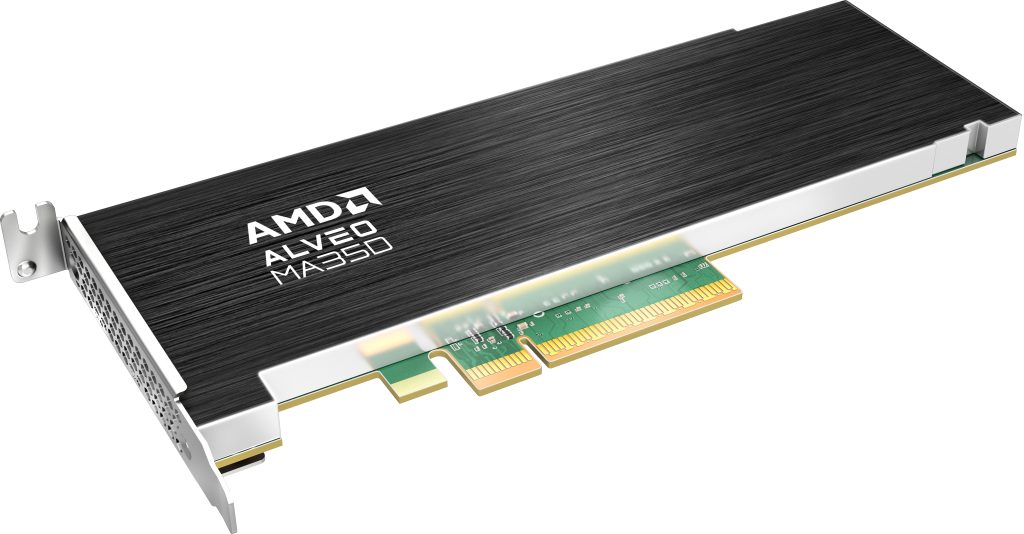AMD announced the AMD Alveo MA35D media accelerator featuring two 5nm, ASIC-based video processing units (VPUs) supporting the AV1 compression standard and purpose-built to power a new era of live interactive streaming services at scale.

The Alveo MA35D media accelerator delivers the high channel density, with up to 32x 1080p60 streams per card, power efficiency and ultra-low-latency performance. The Alveo MA35D delivers up to 4x higher channel density, 4x max lower latency in 4K3 and 1.8X greater compression efficiency4 to achieve the same VMAF score – a common video quality metric.
“We worked closely with our customers and partners to understand not just their technical requirements, but their infrastructure challenges in deploying high-volume, interactive streaming services profitably,” said Dan Gibbons, general manager of AECG Data Center Group, AMD. “We developed the Alveo MA35D with an ASIC architecture tailored to meet the bespoke needs of these providers to reduce both capital and operating expenses for delivering immersive experiences to their users and content creators at scale.”
The Alveo MA35D utilizes a purpose-built VPU to accelerate the entire video pipeline. The platform provides ultra-low latency support for themainstream H.264 and H.265 codecs and features next-generation AV1 transcoder engines delivering up to a 52% reduction in bitrate for bandwidth savings versus a comparable software implementation.
“AMD’s announcement of the new Alveo MA35D add-in card is an exciting advancement of video acceleration for data centers and is an important step in building out a fully-fledged ecosystem to support royalty-free, high-definition video devices, products, and services,” said Matt Frost, Alliance for Open Media Chair. “Live streaming providers are looking for higher density, lower power, lower latency AV1 solutions and by addressing these, Alliance members such as AMD are helping facilitate AV1 deployment and overall adoption.”
The accelerator features an integrated AI processor and dedicated video quality engines designed to improve the quality of experience at reduced bandwidth. Optimization techniques include region-of-interest (ROI) encoding for text and face resolution, artifact detection to correct scenes with high levels of motion and complexity, and content-aware encoding for predictive insights for bitrate optimization.